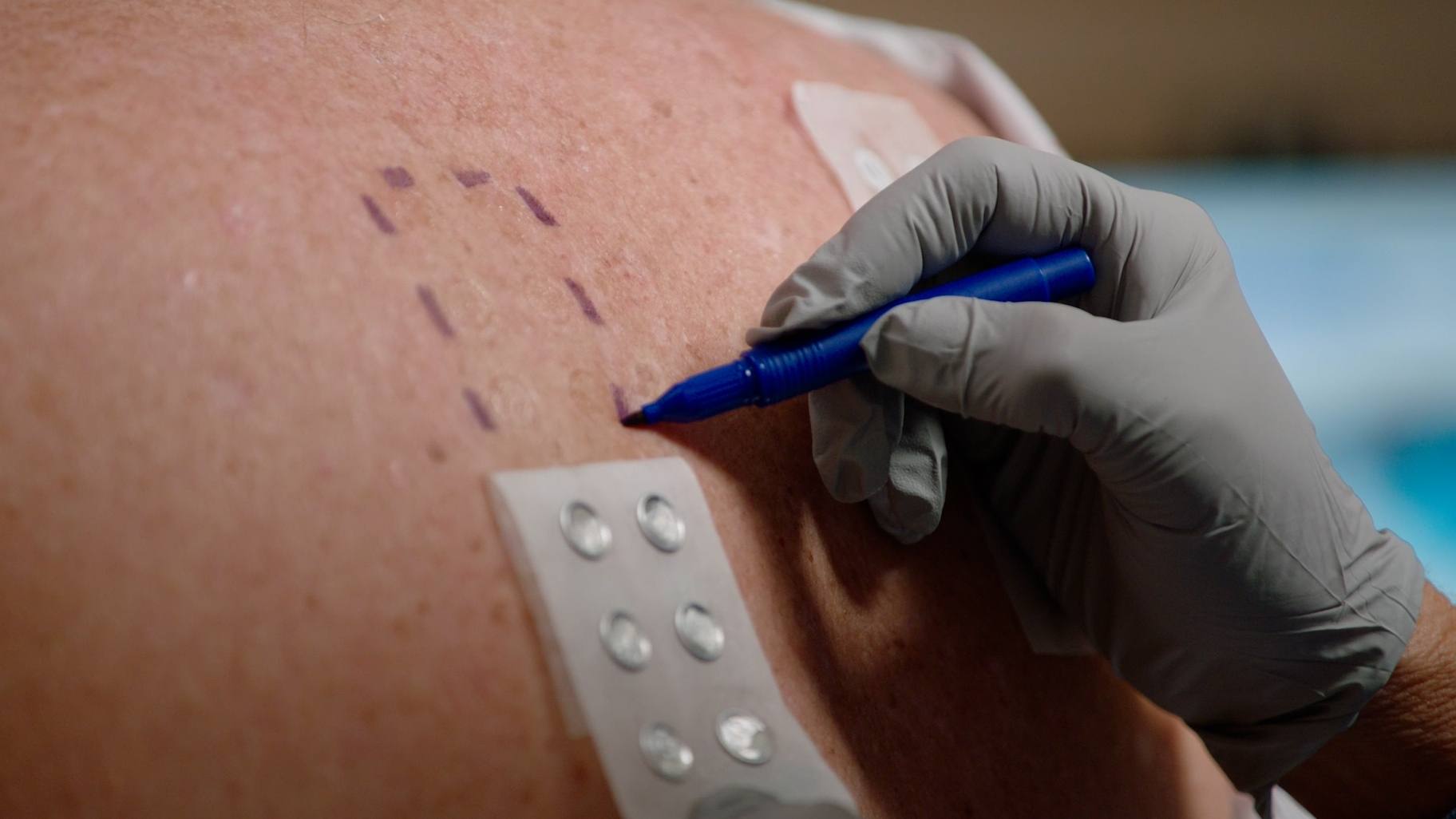
Dr. Alison Bruce, a dermatologist at Mayo Clinic, is aiding the development of an artificial intelligence (AI)-powered tool to support allergy patch testing. The tool is being designed to help patients self-apply test patches and use their smartphones to capture images over time, with technology offering guidance that could assist clinicians in diagnosis. It’s a promising step toward faster, easier and more accessible skin allergy care, especially for people in rural areas or those with limited access to specialists.
Watch: The future of skin allergy testing
Journalists: Broadcast-quality video (1:56) is in the downloads at the end of this post. Please courtesy: “Mayo Clinic News Network.” Read the script.
Itchy skin. Swollen patches. A red, angry rash. Skin allergies impact nearly 1 in 5 people.
“That is when a substance comes into contact with the skin and causes a reaction,” says Dr. Bruce.
You may think of poison ivy triggering a reaction, but jewelry, fragrances, lotions and many more substances can cause a skin reaction known as contact dermatitis.
“What happens is the skin just turns red, itchy, flaky, scaly, kind of sometimes becomes fissured, if it’s very severe, kind of becomes so red and inflamed that the skin breaks down and you get little cracks and crevices in the skin,” Dr. Bruce says.
A new tool in development at Mayo Clinic aims to help patients and their healthcare team determine the cause of the reaction.
“We’ve been working on an AI tool to help with skin allergy testing because in current state, if you suspect that, as a patient or your doctor suspects that, you have allergic contact dermatitis, the way to test for that would be through patch testing,” she says.

But testing can be time-consuming, requiring patients to return to the dermatologist’s office multiple times.
“The idea behind having AI enhance what we’re doing is, if you can imagine a situation where instead of going into your dermatologist, you were able to put the patches on your skin yourself, remove them at a predetermined time and then use your cellphone, use the camera on your cellphone, to image those reactions, and then AI would be potentially able to interpret the reactions to: ‘Yes, there’s a red reaction that corresponds to nickel, and, therefore, you’re allergic to nickel,'” says Dr. Bruce.
She says the new tool can improve the lives of those having skin reactions by making diagnosis more accessible and faster for patients.
“It can be done remotely. It can be done with imaging, AI interpretation, etc. It really broadens the reach of people who need care that can’t always make it to places like Mayo Clinic,” she adds.
Related posts:
- Tomorrow’s Cure: How AI enhances skin allergy testing
- Mayo Clinic Minute: Atopic dermatitis triggers and treatment
Disclaimer
The information contained in South Florida Reporter is for general information purposes only.
The South Florida Reporter assumes no responsibility for errors or omissions in the contents of the Service.
In no event shall the South Florida Reporter be liable for any special, direct, indirect, consequential, or incidental damages or any damages whatsoever, whether in an action of contract, negligence or other tort, arising out of or in connection with the use of the Service or the contents of the Service. The Company reserves the right to make additions, deletions, or modifications to the contents of the Service at any time without prior notice.
The Company does not warrant that the Service is free of viruses or other harmful components












